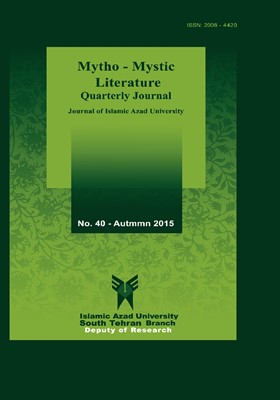-
-
List of Articles
-
Open Access Article
1 - Satan in Attār's Thoughts
Ebrāhim Ebrāhimtabār -
Open Access Article
2 - Iranian Myths: A Result of Social and Geographical Changes
Hamidrezā Ardestāni Rostami -
Open Access Article
3 - Studying on Shāhedbāzi in Mystical Texts from Psychological Point of View
Jamshid Bāgherzādeh Behrooz Mehri SeyyedMohammad Ᾱrtā -
Open Access Article
4 - Awareness of Death in the Story of Mattie and Grandpa
Narges Bāgheri Sharooz Hamidi -
Open Access Article
5 - Archetypal Critique of Banu Goshasp Nama
Khadijeh Bahrāmi Rahnamā Mahmood Tāvoosi -
Open Access Article
6 - Mythical Symbols in Haft Paykar
Abbas Khāefi Bahāreh Hoshyār Kalvir -
Open Access Article
7 - Connection of Love and Epic in Shāhnāmeh and the Story of Koroghlu: A Comparative Study
Ateke Rasmi Sakineh Rasmi -
Open Access Article
8 - Siavash and the Myth of Eternal Return
Vahid Rouyāni Mansour Hātaminezhād -
Open Access Article
9 - Negative Manifestations of Anima in Literature and Myths
Asgar Salāhi Jafar Eshqī -
Open Access Article
10 - Karāmat and Its Functions in the Early Islamic Mystical Texts
Seyyed Jalāl Mousavi
-
The rights to this website are owned by the Raimag Press Management System.
Copyright © 2021-2025







